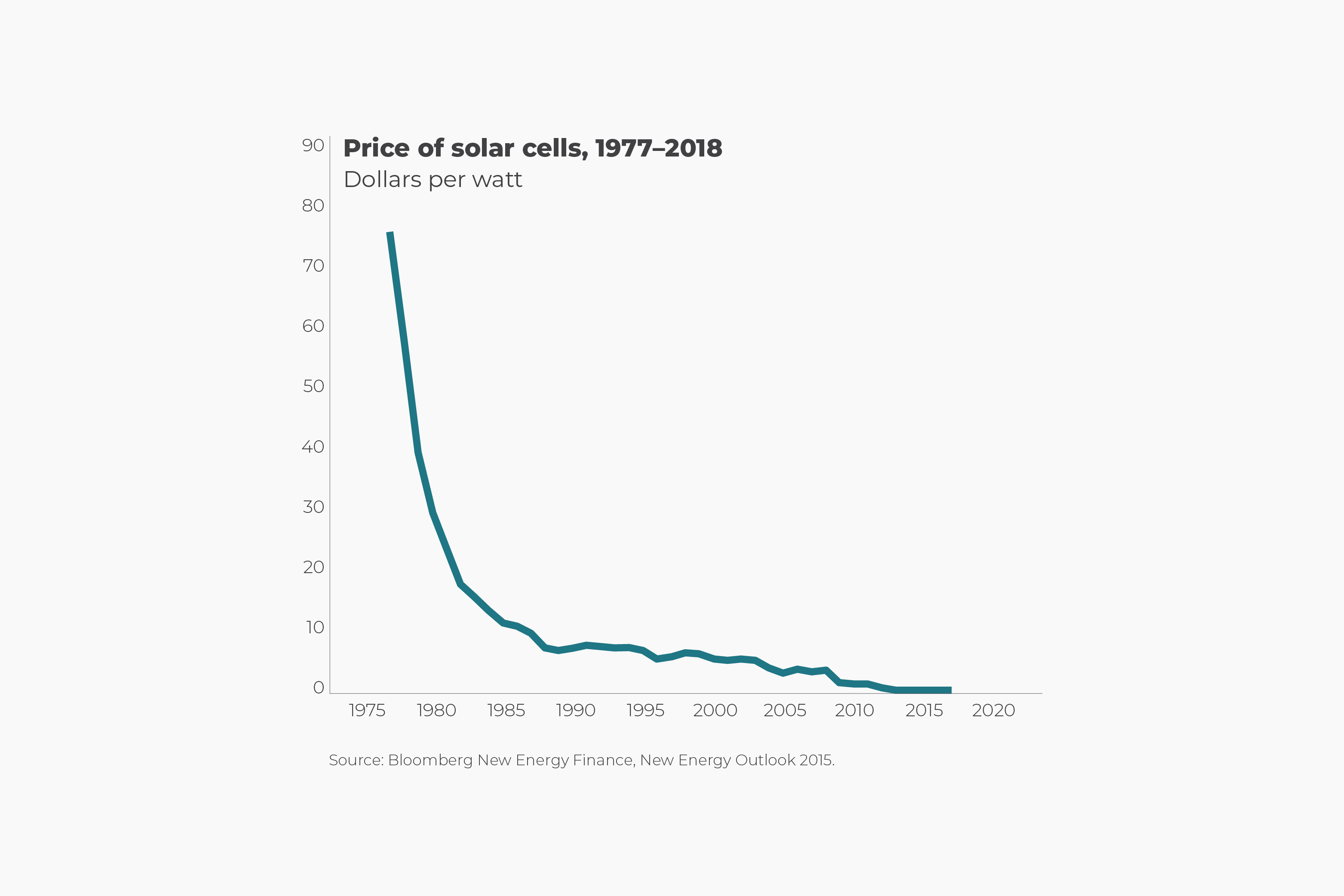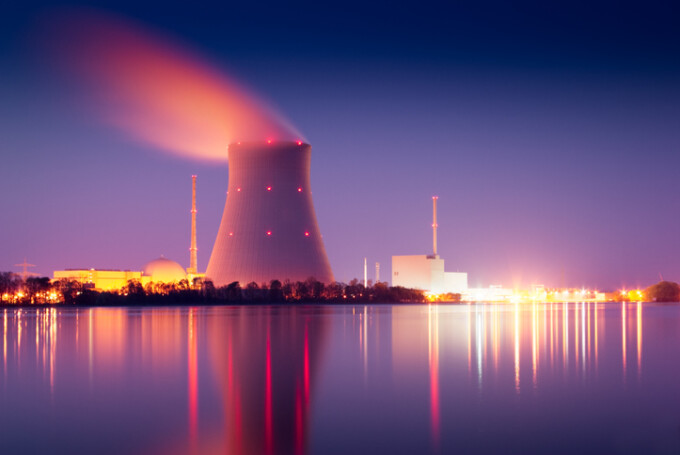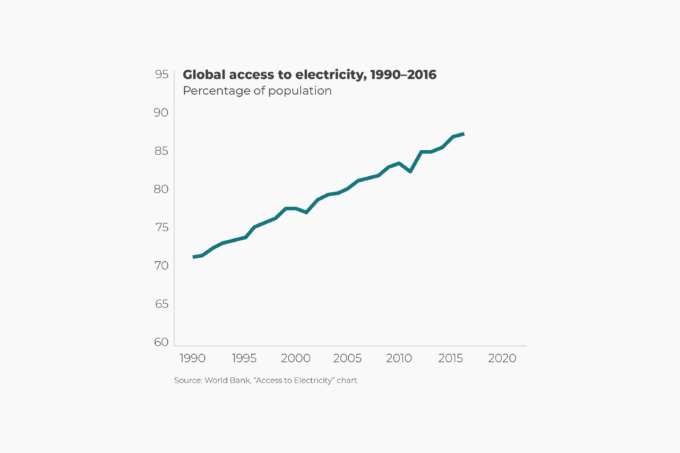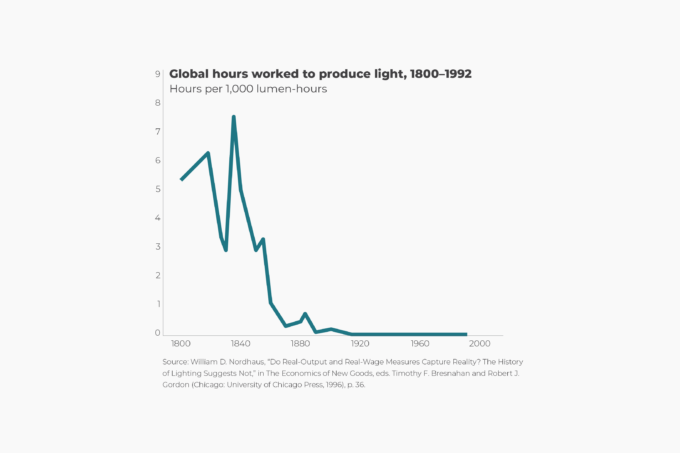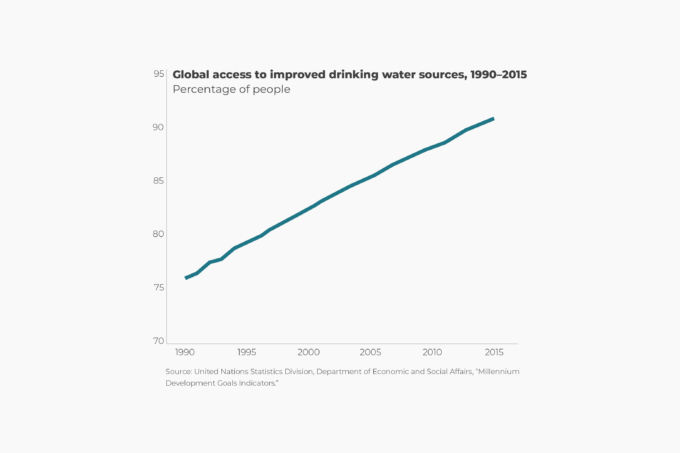The prices of silicon solar photovoltaic cells will continue their steep exponential decline, according to the New Energy Outlook 2018 report from Bloomberg’s New Energy Finance (BNEF) group. According to the BNEF, the average price of silicon photovoltaic (PV) cells fell from $76 per watt in 1977 to $4 per watt in 2008, a drop of nearly 95 percent. Since 2008, the price of PVs has fallen to $0.24 per watt, another drop of nearly 95 percent.
That downward trajectory tracks technological improvements in the efficiency of solar cells, as well as increasing economies of scale. With regard to the latter, solar cell prices seem to be following Swanson’s law, named for Richard Swanson, the founder of U.S. solar-cell manufacturer SunPower. Swanson suggests that the cost of PV cells falls by 20 percent with each doubling of global manufacturing capacity. The pattern is a product of constantly improving manufacturing processes: more automation, better quality control, materials reduction, and so forth.
As of 2018, BNEF reports that global wind and solar developers had installed their first trillion watts of power-generation capacity, and it projects that the next trillion watts in renewable generation will be completed within the next five years. In 2016, total world electric power-generation capacity stood at 6.2 trillion watts.
As the result of ever-falling costs, the Bloomberg analysts project that by 2050, wind and solar technologies will generate almost 50 percent of total electricity globally, with hydropower, nuclear power, and other renewables pushing total zero-carbon electricity up to 71 percent. The big loser will be coal, with its share of global electricity generation shrinking from 38 percent today to 11 percent in 2050. And silicon solar cells may be superseded by even cheaper and more-efficient sun-harvesting technologies, such as perovskite cells at a projected $0.10 per watt.

